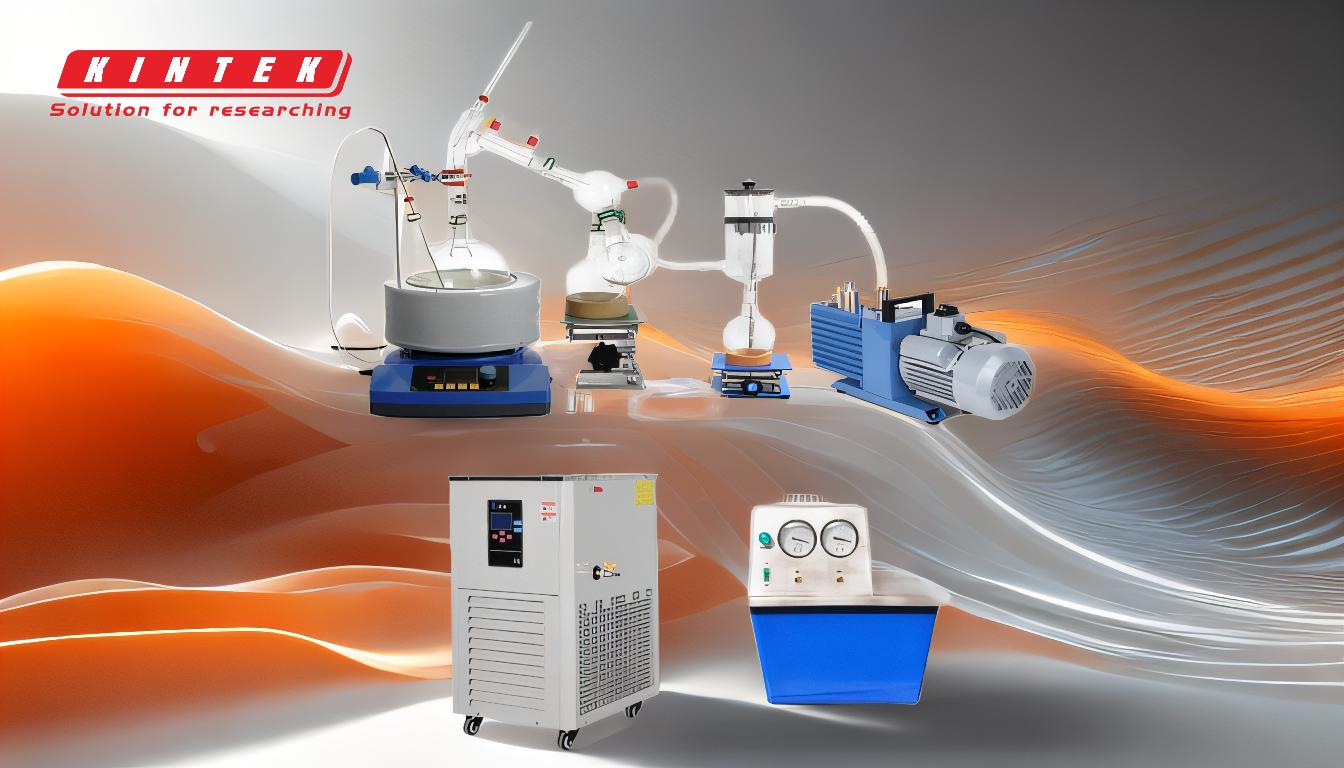Simple distillation is more efficient in specific scenarios due to its straightforward design and operational principles. It is particularly effective for separating mixtures with significantly different boiling points, typically requiring a difference of at least 25°C. This method involves heating the liquid mixture to its boiling point and immediately condensing the vapors, which simplifies the process and reduces energy consumption. Additionally, simple distillation avoids the complexities and potential inefficiencies associated with more advanced distillation techniques, such as fractional or molecular distillation, which are better suited for mixtures with closer boiling points or sensitive compounds. The efficiency of simple distillation is further enhanced by maintaining optimal conditions, such as a high vacuum degree and low cooling medium temperature, which increase the evaporation rate and ensure effective separation.
Key Points Explained:

-
Simplicity of Design and Operation:
- Simple distillation involves heating a liquid mixture to its boiling point and condensing the resulting vapors immediately. This straightforward process minimizes the need for complex equipment and reduces the likelihood of operational errors.
- The simplicity of the system allows for easier maintenance and lower operational costs compared to more advanced distillation methods like fractional or molecular distillation.
-
Effective for Mixtures with Significantly Different Boiling Points:
- Simple distillation is particularly efficient for separating mixtures where the boiling points of the components differ by at least 25°C. This significant difference ensures that the components vaporize and condense at distinct temperatures, facilitating effective separation.
- For mixtures with closer boiling points, fractional distillation or other advanced methods may be required, which can introduce additional complexity and reduce efficiency.
-
Energy Efficiency:
- By focusing on the boiling point difference, simple distillation can achieve effective separation with relatively low energy input. The process does not require the repeated heating and cooling cycles that are characteristic of fractional distillation, which can be more energy-intensive.
- The use of a vacuum system, as mentioned in the references, can further enhance energy efficiency by lowering the boiling points of the components, reducing the required heat input.
-
Optimization of Operational Conditions:
- The efficiency of simple distillation can be optimized by controlling key factors such as the system vacuum value, heat pot temperature, and cooling medium temperature. A high vacuum degree and low cooling water temperature, as highlighted in the references, are particularly important for increasing the evaporation rate.
- Proper maintenance of the vacuum system, including the use of high-quality components like PTFE sealing rings and vacuum tubes, ensures consistent performance and minimizes energy losses.
-
Suitability for Specific Applications:
- Simple distillation is well-suited for applications where the primary goal is to separate components with significantly different boiling points. This makes it an efficient choice for many industrial and laboratory processes where the complexity of fractional distillation is unnecessary.
- For more complex mixtures or sensitive compounds, other distillation methods may be more appropriate, but simple distillation remains a highly efficient option for its intended applications.
In summary, simple distillation is more efficient in scenarios where the mixture components have significantly different boiling points and where the simplicity and energy efficiency of the process are advantageous. By optimizing operational conditions and maintaining the system properly, simple distillation can achieve effective separation with minimal energy input and operational complexity.
Summary Table:
| Aspect | Details |
|---|---|
| Simplicity of Design | Minimal complex equipment, easy maintenance, and lower operational costs. |
| Boiling Point Difference | Effective for mixtures with at least 25°C boiling point difference. |
| Energy Efficiency | Low energy input, no repeated heating/cooling cycles, vacuum system support. |
| Operational Optimization | High vacuum, low cooling temperature, and quality components enhance performance. |
| Suitability | Ideal for industrial and lab processes with significant boiling point differences. |
Need help optimizing your distillation process? Contact our experts today for tailored solutions!









